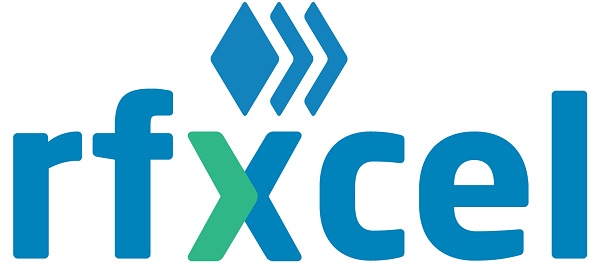The WHO estimates that roughly 10% of drugs in the global marketplace are counterfeit, with levels being much higher in developing countries (30-40%).
In the U.S. alone, the FDA found that more than 50% of online drug purchases are fake. However, it’s not all bad news. Serialization solutions that can authenticate and certify medicines are making huge strides in helping eliminate these global problems.
With serialization software, pharmaceutical companies can reduce their risks and customers’ exposure to fake medicines. Serialization software minimizes the chances of product mix-ups during distribution and helps prevent the spread of counterfeit drugs. There are many benefits to the pharmaceutical industry, so how should you go about choosing the right serialization software?

There are three areas that you must consider when choosing a reliable serialization software:
First, your technical requirements, and how the vendor will meet or accommodate them; Second, the process of product implementation; Third, the people or team you will work with and their ability to be long-term partners. Take all three under consideration, and you’ll be on your way to choosing the best serialization solution for you.
Make sure the technology matches up.
Customers looking to get the best quality serialization product must be sure to look beyond the added features and prioritize the ability of the software to handle the data. Remember, features that are highlighted to sell the product can be beneficial, but the software will do you no good if it cannot handle your data.
It’s also important to check that the software offers continued data validation and verification after implementation, as well as before. Selecting a product that provides this can be hugely beneficial, as it allows for the correction of errors that may arise after implementation. Furthermore, to ensure an efficient and safe supply chain, product master data should be aligned and accurate.

Another area to research before choosing serialization software is how and where the system is maintained and hosted. Today, the vast majority of serialization software is either hosted in a public cloud or a private cloud often referred to as single or multi-tenant environments. Many serialization solutions are hosted in multi-tenant environments, which force customers to accept updates at the convenience of the vendor.
These vendors market their multi-tenant architecture as a way to get automatic software updates with little to no effort. However, be careful, this approach offers very little control to the customer and forced automatic updates often lead to chaotic end-user environments, leaving customers powerless if the update comes at a critical point in supply chain processes, which could lead to customers shutting down lines.
Finally, software providers using multi-tenant environment means that if one customer requires a new feature, then all customers get the new feature. This could be inconvenient at best and damaging at worst.
However, choosing software that operates in a private cloud or single tenant environment keeps all these problems at bay. With a single tenant architecture, you have control over your systems and your updates and can ensure your configurations remain intact.
In addition to giving you autonomy over upgrades and the addition of features, private clouds also allow you to run specific tests according to your chosen guidelines. Then, after completing the tests to make sure the upgrade is the right fit, you can install it on your terms.
Scrutinize the process as well as the product
Not only must you look in detail at the product you’re buying, but you must also prioritize the process behind the implementation. Make sure that the vendor’s team has a formal process in place to ensure they’re providing a fully validated system. It also pays to have your quality assurance team review the quality documents and process before implementation.
 Without a doubt, the most critical aspect of the process is the implementation of the product. Many vendors shift this procedure to the customer, which can be extremely problematic, carrying the potential to induce significant delays. By doing this, the customer has to implement the system on their own with little consultation from the vendor should they run into any obstacles.
Without a doubt, the most critical aspect of the process is the implementation of the product. Many vendors shift this procedure to the customer, which can be extremely problematic, carrying the potential to induce significant delays. By doing this, the customer has to implement the system on their own with little consultation from the vendor should they run into any obstacles.
Companies that choose to cut costs by opting for a vendor that relieves themselves of this responsibility could end up paying for it in the long term. The time and manpower spent implementing unfamiliar software and overcoming the inevitable obstacles that come with it are considerable. While it is wise for the customer to be involved throughout implementation they should not be left holding the bag when it comes to installation.
Finally, before purchasing any serialization software carefully examine the service pricing model. It’s not uncommon for vendors to charge in relation to the length of the project. This type of pricing model allows them to keep adding charges for ‘extras’ onto your final bill, which gives them little incentive to get it done well, quickly, and efficiently.
At rfxcel, we place tremendous importance delivering our software on time and on budget. Whether you use rfxcel or another company, consider firm fixed price contracts or time and materials. They provide more incentive for the vendor to complete implementation on time with no incentive to extend implementation.
Trust the people behind the process.
While less of a tangible box to tick, make sure that you and your vendor are on the same page. Set a clear project scope, timeline and schedule. It is crucial to work with a firm that you can trust and view as a partner, rather than one that seeks to install new software and move on. Make sure the vendor is prepared to work with you to resolve issues and is willing to be flexible to address any unexpected obstacles. Having a responsible partner that helps you find ways to solve issues that may arise, paves the way for smooth sailing on your way to serialization.
Now that you know the three most important factors when choosing serialization software -people, process and technology – you’re all set to start reviewing your serialization software options. By considering these three distinct yet equally important factors, you can be sure you’re purchasing a product that promises to serve all of your serialization needs.

















![Sirio Launches Global Research Institute for Longevity Studies [SIA]](https://www.worldpharmatoday.com/wp-content/uploads/2019/09/Sirio-218x150.jpg)



